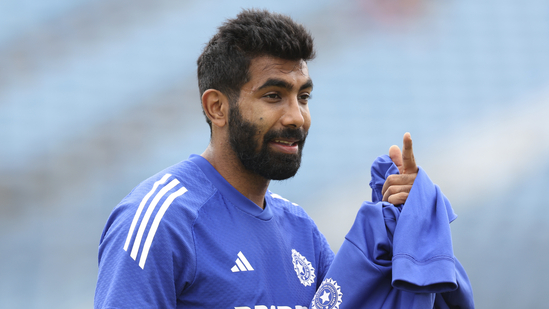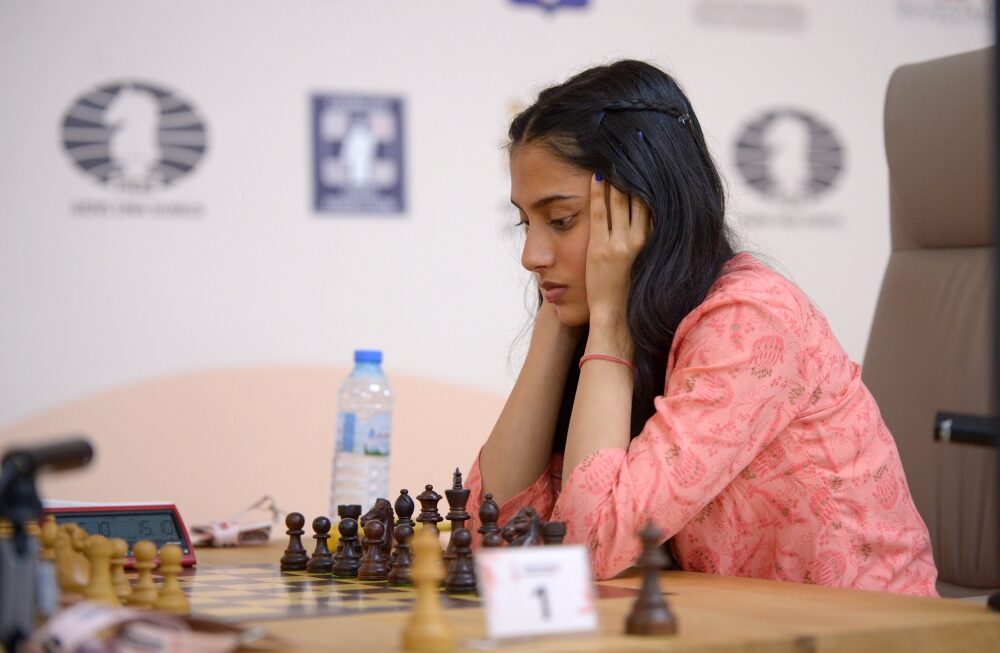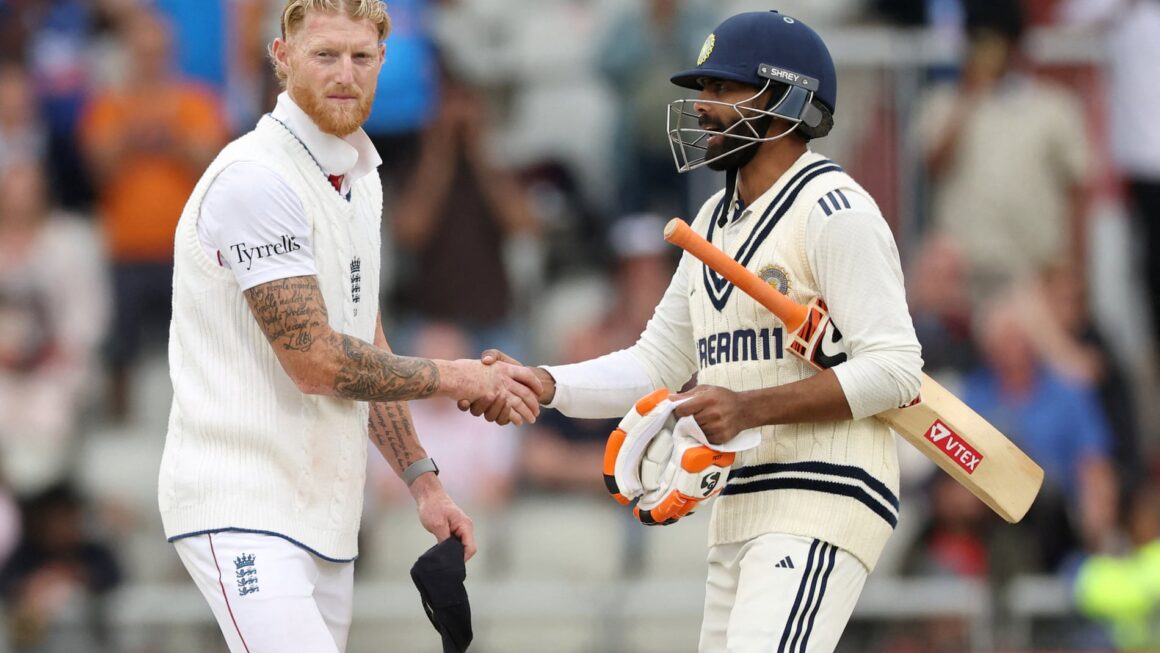India’s Strategic Bowling Changes: Bumrah’s Absence and Gambhir’s Selection Dilemma for England Test Series
Multiple Pacers Skip Training Sessions Ahead of Crucial Second Test
We have witnessed a significant development in India’s preparation for the second Test against England, with multiple pace bowlers notably absent from the team’s training sessions. The absence of Jasprit Bumrah and Prasidh Krishna from the Birmingham nets has raised questions about India’s bowling strategy and forced head coach Gautam Gambhir to reconsider his tactical approach.
Bumrah’s Workload Management Strategy Under Scrutiny
India’s pace spearhead Jasprit Bumrah has been conspicuously absent from the team’s net sessions, confirming earlier reports about his planned workload management throughout the five-match Test series. We understand that this decision was made before the series commenced, with team management committed to playing Bumrah in only three of the five Tests.
The strategic decision to rest Bumrah comes despite his exceptional performance in the first Test, where he shouldered the responsibility of leading India’s pace attack. His absence from training sessions indicates that the team management is prioritizing his long-term fitness over immediate tactical needs.
The Workload Management Dilemma
We observe that India’s approach to managing Bumrah’s workload reflects broader concerns about fast bowler sustainability in modern cricket. The decision to limit his appearances to three Tests demonstrates the team’s commitment to preserving their premier pace asset for crucial matches while managing the risk of injury.
Former India spinner Ravichandran Ashwin has suggested that Bumrah should play the second Test, highlighting the tactical importance of his presence in challenging English conditions. However, the team management appears resolute in their pre-planned rotation strategy.
Prasidh Krishna’s Availability Concerns
Adding to India’s bowling concerns, Prasidh Krishna has also been absent from the training sessions, raising questions about his fitness and availability for the second Test. We note that Krishna’s potential absence would compound the team’s pace bowling challenges, particularly given Bumrah’s planned rest.
The dual absence of these key pacers has created uncertainty about India’s bowling composition for the Edgbaston Test, forcing the team management to explore alternative options within their squad.
Gambhir’s Strategic Approach to Team Selection

Head coach Gautam Gambhir faces a complex selection puzzle with multiple pace bowlers unavailable for training. We observe that his tactical decisions will be crucial in determining India’s bowling strategy for the remainder of the series.
Leadership Transition in Pace Attack
With Bumrah’s absence confirmed, Mohammed Siraj emerges as the natural leader of India’s pace attack. We recognize that Siraj will need to shoulder additional responsibility, not only as the primary strike bowler but also as a mentor to the supporting pace options.
The transition of leadership within the bowling unit represents a significant tactical shift, requiring adjustments in field placements, bowling rotations, and overall match strategy.
Impact on India’s Test Series Prospects
The absence of key pace bowlers creates both challenges and opportunities for India’s Test campaign. We analyze that while losing Bumrah’s exceptional skills presents difficulties, it also provides chances for other bowlers to step up and prove their worth in challenging English conditions.
Depth Testing Under Pressure
India’s pace bowling depth will be thoroughly tested, with players like Akash Deep, Mukesh Kumar, and other squad members potentially called upon to fill the void. We expect these bowlers to demonstrate their capabilities in conditions that traditionally favor pace bowling.
The situation also tests the team’s tactical flexibility and ability to adapt strategies based on available resources rather than relying on established combinations.
Historical Context of Workload Management
We examine similar instances in international cricket where teams have successfully managed star players’ workloads during crucial series. The decision to rest key players during ongoing series requires careful balance between immediate needs and long-term objectives.
Learning from Past Experiences
Previous examples of workload management in Test cricket demonstrate both successful and unsuccessful approaches. We note that teams achieving the right balance typically benefit from having adequate depth and clear communication about rotation policies.
Alternative Bowling Strategies
With traditional pace options limited, India may need to explore different bowling combinations and tactics. We consider various strategic approaches that could compensate for the absence of key pace bowlers.
Spin-Pace Balance Adjustments
The team might need to reconsider the balance between pace and spin bowling, potentially giving greater responsibility to spin options or adjusting field placements to maximize the effectiveness of available pace bowlers.
Selection Committee Considerations
The selection decisions for the second Test will reflect the team management’s priorities and tactical philosophy. We analyze the factors that will influence these crucial choices.
Squad Depth Evaluation
This situation provides an opportunity to evaluate the true depth of India’s pace bowling resources and identify potential long-term solutions for similar scenarios in future series.
Tactical Implications for Edgbaston Test
The Edgbaston venue presents specific challenges that will test India’s adapted bowling strategy. We evaluate how the team’s revised bowling approach will perform in these conditions.
Pitch and Weather Considerations
English conditions at Edgbaston typically favor pace bowling, making the absence of key pacers particularly significant. The team will need to adjust their tactics to maximize effectiveness with available resources.
Long-term Strategic Vision
Beyond the immediate Test, we consider how these decisions fit into India’s broader strategic planning for the series and future international commitments.
Building for Future Success
The current situation provides valuable experience for emerging pace bowlers and tests the team’s ability to adapt to changing circumstances, potentially strengthening their overall capabilities.
Conclusion: Navigating Uncertainty with Strategic Flexibility
India’s bowling situation ahead of the second Test represents a complex tactical challenge that will test both the team’s depth and strategic flexibility. We observe that while the absence of key pace bowlers creates immediate difficulties, it also provides opportunities for growth and adaptation.
The decisions made by Gautam Gambhir and the team management will significantly influence not only the outcome of the second Test but also the overall trajectory of India’s Test series campaign. We expect these choices to reflect a careful balance between immediate tactical needs and long-term strategic objectives.
The true test of India’s bowling depth and tactical acumen will unfold at Edgbaston, where adapted strategies must prove effective against a formidable English batting lineup. The team’s ability to overcome these challenges will demonstrate their resilience and tactical sophistication in international cricket’s most demanding format.













